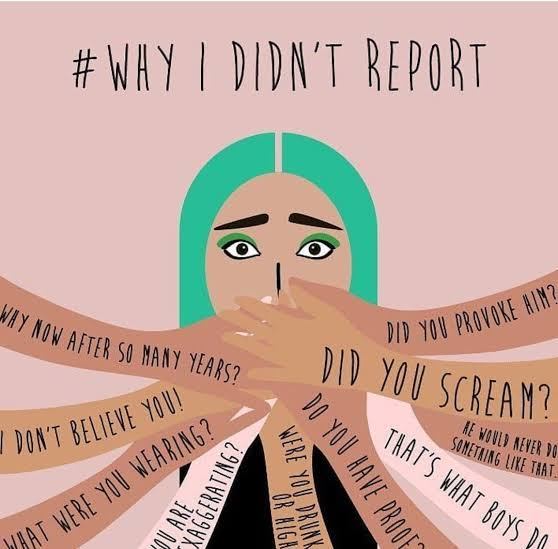Wealth, authority, and fame accept a victim-blaming attitude that promotes sexual assault

More stories from Coco Corey
He’s Deshaun Watson, an NFL quarterback. He’s Prince Andrew, the Duke of York, brother to Prince Charles, the heir to the British throne. He’s countless actors, musicians, CEOs, and he is lawyered up . . .
He’s the boss; he’s in charge. She’s an intern—who will believe her? He paid her off, she needs the money: silence until the next physically and mentally damaged girl and then another and another and another. A man with money means nearly untouchable, for now.
Prince Andrew, for example, was friends with Jeffrey Epstein, a convicted sex offender. Virginia Roberts Giuffre, in a Netflix documentary, said, “Epstein did not act alone, so my next step is holding other people accountable, the people that were involved, the people that actually participated . . . The monsters are still out there, and they are still abusing other people” (Williamson, n.d.). Virginia went on to also accuse Prince Andrew of participating and being entangled in Epstein’s web of sex crimes and abuse. If a system of laws are in place to prevent these things, why are royals able to undermine them?
Well, she wanted to meet him; he’s a celebrity, has money, could make her famous, has connections . . . And what were her motives in meeting him—was she flirty?
What was she wearing?
There are too many empty accusations defense attorneys can throw at the victim, but juries and the public opinion still believe them. Women will wear what they feel comfortable in. We will wear whatever we want to wear; it’s a human right.
“Cover your shoulders.”
“Your bra strap is showing!”
“That skirt’s too short…”
“You’re distracting him.”
In a world where girls are sent home based on the width of their tank top straps, boys are bred to become “boys will be boys” type men.
I’m turned on by her skirt. If I act on that it’s her fault; she’s the one who chose to wear it.
It’s male biology, sure. But shouldn’t the narrative be to teach our sons to respect women regardless of how they physically present themselves? The venomous mindset of modern society says, “No, tell your daughter to cover up,” and it makes me sick.
The Larry Nasser case is one clear cut example of a silent crisis where the abused remained silent against the abuser out of deference to authority. Aspiring teenagers were sent to Dr. Nasser throughout their gymnastic careers at camps, gyms, and even the Michigan State University clinic. He molested young women for decades, and they stayed silent.
Why wouldn’t they speak up? They could’ve stopped him if they actually tried.
Historically, with male abuse and sexual-assault, the female victim is perceived to be at fault: she shouldn’t have worn that; she could’ve said something sooner; she should have known, she should have, she shouldn’t have . . .
In an act to mitigate or diminish the prejudice against women, these victims are held entirely or partially at fault for the harm they experienced: victim blaming 101 (Rape Culture, Victim Blaming, And The Facts | Southern Connecticut State University, 2019). Society blames her for the action of her offender.
“She was asking for it.”
Change that narrative.
He could’ve. He shouldn’t. He should’ve.
Rape culture has become prevalent; we’ve reached a state of normalization of sexual violence on females. Though rape culture may seem like a distant thing to some, examples of it may be unsettlingly familiar to many. In the world of high school I’ve experienced first hand, I’ve witnessed a variety of forms of rape culture: men are pressured to “score,” and manhood is viewed as dominant. I’ve heard a copious amount of sexually explicit “jokes” or comments accompanied by underlying assumptions that only a certain type of women get raped, that men don’t get raped, and even a push towards teaching women how to not get raped.
Disheartening—and beyond discouraging—data collected from a survey on girls in the United Kingdom has come to light more recently: 97% of women aged 18 to 24 have experienced sexual harassment in public places (Thompson, n.d.).
It’s not all men.
It’s not all men—predators exist as both male and female—that’s true; but it is almost all women. In sight of the statistic above, 3% of women remain. And, truly, it’s possible that those within that small percentage just haven’t spoken up. Talking about it and addressing it, at this point, simply isn’t enough. This is a human rights crisis globally; gender inequality exists worldwide—not just within the U.K. It needs to be solved now.
The furthest reaction from helpful is to blame the victim. The drive behind those that victim-blame is to create a distance between themselves and the situation. When women blame a girl for her sexual assault, for example, it insinuates in her head that the girl did a certain thing for her offender to assault her—giving her an “If I don’t do that, I’ll be fine” mentality. It’s a counterproductive defense mechanism that only makes it harder for victims to come forward with their abuse.
When we stop victim-blaming, more victims will come forward. Stop blaming the victim to start ridding the predators; we only have so long until that 97 becomes 100.

Coco Corey is a senior entering her second year writing for The Central Trend. Coco plays on the tennis team, and she is also one of the four student section...




























































































Sammy D • Mar 28, 2021 at 5:26 pm
Ah, what a pleasure it is to be back and working beneath the most passionate columnist at our school. Truly, miss Coco, you have found a voice that I and many others are privileged to hear. But especially me. I am your biggest fan.